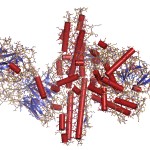
Temporomandibular disorders (TMD) are thought to affect around 15% of the adult population and a wide range of treatments have been suggested from patient education, pharmacological therapy, and psychological therapy, as well as non-invasive interventions including physio therapy and the application of a splint, to further surgical interventions.
Botulinum toxin (BTX) blocks the presynaptic release of acetylcholine (Ach) into the end-plate of the neural junction, thus leading to reduced activity of the muscles or glands. It was first used for the treatment of neuromuscular disorders and has now expanded to include the management of pain disorders of musculoskeletal origin, including myofascial pain syndrome. The aim of this review was to assess the efficacy of BTX use in TMD, especially pertaining to myofascial pain and disc derangement disorders.
Methods
Searches were conducted in PubMed, Cochrane CENTRAL and Embase. These were supplemented with hand searches of the Journal of Oral and Maxillofacial Surgery; International Journal of Oral and Maxillofacial Surgery; British Journal of Oral and Maxillofacial Surgery; Journal of Orofacial Pain; Oral Surgery, Oral Medicine, Oral Pathology, Oral Radiology, and Endodontology; Journal of Cranio-Maxillo-Facial Surgery
English language, peer-reviewed publications of randomized controlled trials comparing BTX versus any alternative intervention or placebo for patients with temporomandibular disorder classified according to the American Association of Orofacial Pain (AAOP) guidelines, or the RDC/TMD (research diagnostic criteria for TMD were considered. Study quality was assessed using the Cochrane risk of bias tool.
Results
- 5 RCTs (3 parallel; 2 cross-over design) were included involving a total of 117 participants.
- All 5 studies were targeted primarily on the masseter and temporalis muscles, and most of them administered injections at bilateral muscle sites.
- 2 trials revealed a significant between-group difference in myofascial pain reduction,
- One trial that compared BTX with fascial manipulation showed equal efficacy of pain relief on TMDs,
- 2 trials showed no significant difference between the BTX and placebo groups.
- Because of considerable variations in study methods and evaluation of results, a meta-analysis could not be performed.
Conclusions
The authors concluded:
A lack of consensus on the effects of BTX would appear to underline the fact that the therapeutic benefits of BTX on TMDs remain unclear. A more rigorous design of randomised clinical trials with high quality descriptions of all aspects of the methodology and results should be carried out in future studies.
Comments
This review has used a broad search strategy and good methodological approach and has included just 5 RCTs all of which have methodological flaws as noted by the authors. There was also high heterogeneity between the studies particularly relating to the outcomes assessment so no meta-analysis was reported.
A recent Cochrane review update (Soares et al 2014) which was looking more broadly at Botulinum toxin for myofascial pain syndromes was also unable to conduct a meta-analysis of its use concluding;
There is inconclusive evidence to support the use of botulinum toxin in the treatment of MPS based on data from four studies with a total of 233 participants, which we considered were of sufficient quality to be included in this review. Meta-analyses were not possible due to the heterogeneity between studies. We suggest that in future studies the same methodology to assess pain, a standardised dose of treatment, follow-up of at least four months (to observe the maximum and minimum curve of the drug effect) and appropriate data presentation should be used. More high-quality RCTs of botulinum toxin for treating MPS need to be conducted before firm conclusions on its effectiveness and safety can be drawn.
The Soares review also included TMD studies in their search criteria but did not include any TMD papers in their review.
Links
Chen YW, Chiu YW, Chen CY, Chuang SK. Botulinum toxin therapy for temporomandibular joint disorders: a systematic review of randomized controlled trials. Int J Oral Maxillofac Surg. 2015 Apr 25. pii: S0901-5027(15)00141-1. doi: 10.1016/j.ijom.2015.04.003. [Epub ahead of print] Review. PubMed PMID: 25920597.
Soares A, Andriolo RB, Atallah ÁN, da Silva EMK. Botulinum toxin for myofascial pain syndromes in adults. Cochrane Database of Systematic Reviews 2014, Issue 7. Art. No.: CD007533. DOI: 10.1002/14651858.CD007533.pub3.

@TheDentalElf sounds like more inconclusive evidence with likelihood of more (weeping &) gnashing of teeth
RT @TheDentalElf: Don’t miss: Temporomandibular disorders: is botulinum toxin effective? http://t.co/7nxsSVg2fb #EBP
[…] Dental Elf – 15th May 2015 – Temporomandibular disorders: is botulinum toxin effective […]